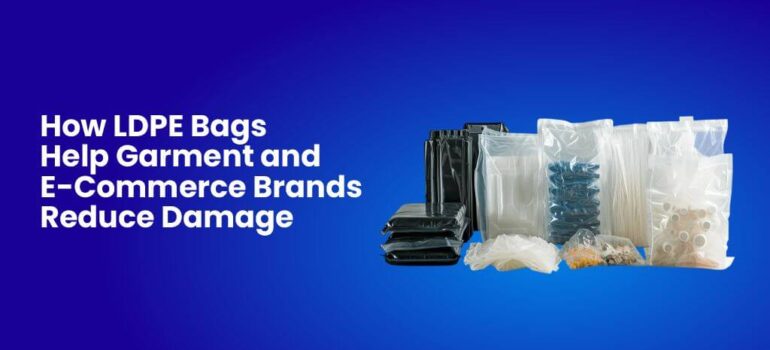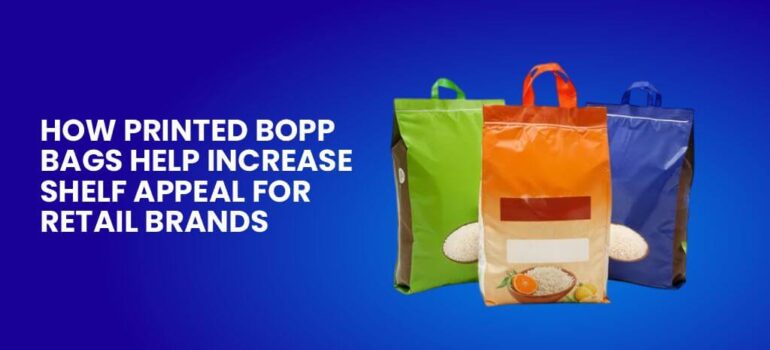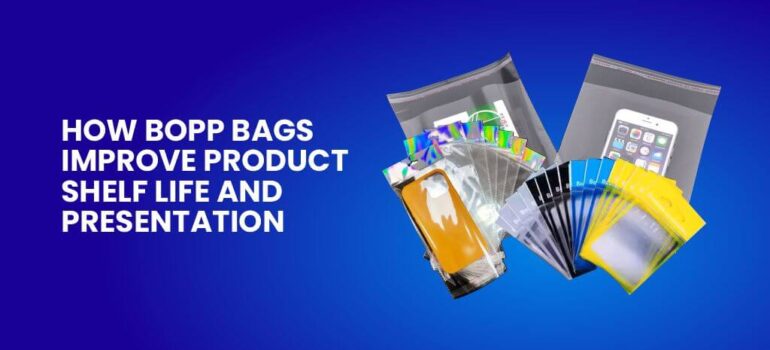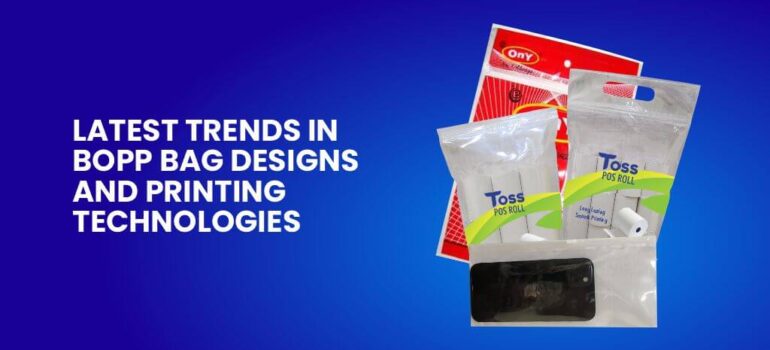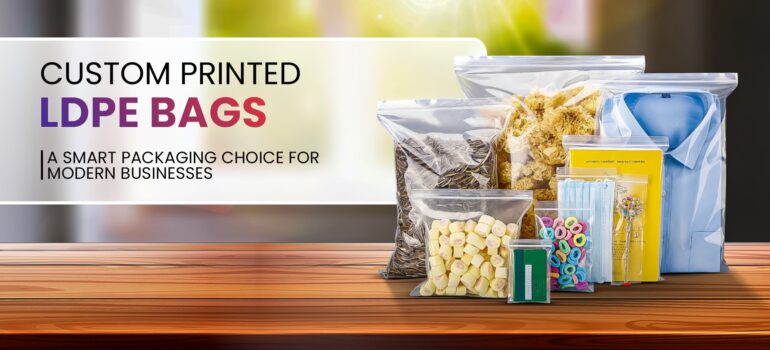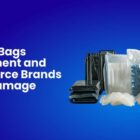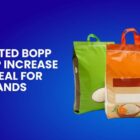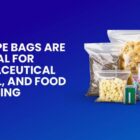How LDPE Bags Help Garment and E-Commerce Brands Reduce Damage
Every garment or e-commerce order that reaches a customer in good condition strengthens the brand’s reputation. But anyone in the industry knows how easily products get wrinkled, stained, torn, or moisture-damaged during storage and shipping. From warehouse handling to last-mile delivery, each step adds risk. That is where LDPE bags come in.
Brands across fashion, retail, and online marketplaces have started adopting LDPE packaging because it protects products better, cuts down on returns, and keeps operations more efficient. Companies like Rilei Pack, known as a trusted LDPE Bags Manufacturer, play a key role by supplying packaging that meets the exact needs of modern supply chains.
This guide explains how LDPE bags reduce product damage, why they’re preferred in the garment and e-commerce sector, and what features brands should look for when choosing the right packaging partner.
What Makes LDPE Bags Ideal for Garment and E-Commerce Packaging
Strong Yet Flexible Material
LDPE (Low-Density Polyethylene) is known for its flexibility and durability. Unlike paper or thin plastic films, LDPE doesn’t tear easily when stretched or rubbed. Clothing, accessories, footwear, and many lightweight FMCG items stay protected even when cartons shift, collide, or get stacked during transit.
Moisture and Dust Resistance
Humidity and dust are two of the biggest threats to garments in storage. LDPE bags naturally block moisture and airborne contaminants, keeping products safe for months. Stores and warehouses with varying temperatures rely on LDPE because it prevents mold, mildew, and odor buildup.
Visibility and Clean Presentation
Most LDPE garment bags are transparent, helping brands maintain a neat, clean look. Retailers can identify products quickly without opening the packaging. This reduces unnecessary handling, which further lowers the chance of damage.
How LDPE Bags Reduce Damage in Garment Packaging
1. Prevents Wrinkles and Fabric Deformation
Garments, especially shirts, trousers, and delicate fabrics, often lose their shape during transportation. LDPE bags help:
- Hold the garment’s fold in place
- Protect fabric fibers from friction
- Keep items flat and neatly compressed
This is especially important for brands shipping premium clothing, formalwear, or fabrics like chiffon, silk, or rayon, which are prone to creasing.
2. Shields Against Dust, Dirt, and Warehouse Contamination
Warehouses are rarely dust-free. Cartons stay on pallets, move through belts, and sit in racks for weeks. LDPE bags create a sealed layer that prevents:
- Dust settles on fabric
- Dye transfer from other materials
- Oils or stains from accidental touches
E-commerce brands selling white or pastel garments see the biggest reduction in returns after switching to LDPE packaging.
3. Protects Against Moisture and Mold
Moisture damage is more common than many brands realize. During monsoon months, garments stored in godowns or during transit often develop:
- Damp patches
- Foul odors
- Mold spots
LDPE is naturally water-repellent. When properly heat-sealed, it keeps garments protected even if cartons get wet or exposed to humidity.
4. Reduces Tearing and Abrasion
Handling garments during picking, packing, and shipping can cause minor tears or loose threads. LDPE bags act as a buffer, reducing fabric-to-surface friction and preventing snags from:
- Conveyor belts
- Rough carton interiors
- Tags or labels from other products
This feature is especially useful for knitted fabrics that catch easily.
5. Minimizes Human Touch Damage
Manual handling increases the risk of stains, fingerprints, and fabric stretching. LDPE bags allow workers to move and sort items without touching the garments directly. This ensures hygiene and keeps the product in its original condition.
How LDPE Bags Help E-Commerce Brands Cut Down on Returns
Online returns often happen because customers receive damaged or mishandled products. LDPE bags directly reduce the most common triggers:
A. Cleaner, Fresher-Looking Products
When a customer opens a parcel, the presentation matters. A neatly packed garment in a clear LDPE sleeve assures them that the product is new, untouched, and hygienic.
B. Better Protection in Long-Distance Shipping
E-commerce packages often travel across multiple sorting centers. LDPE bags add an inner safety layer, ensuring the product stays intact even if the outer packaging suffers minor damage.
C. Tamper-Evidence and Customer Trust
Many brands use LDPE bags with tamper-proof seals. This prevents repacking or product switching, increasing customer confidence.
D. Reduction in Smell Transfer
Sometimes, cardboard boxes absorb smells from warehouses or transport trucks. LDPE bags prevent odor transfer to the fabric, maintaining freshness.
Benefits for Warehouses and Fulfillment Operations
Streamlined Packing Processes
LDPE bags are lightweight and easy to handle, making them ideal for high-volume fulfillment. Workers can quickly insert products, seal the bag, and move items without slowing down the operational workflow.
Space Optimization
Garments packed in LDPE bags can be compressed more efficiently, saving storage space in cartons and racks.
Barcode or Label Convenience
Brands often add printed barcodes or product details directly on the LDPE surface, helping with:
- Faster inventory scanning
- Reduced labeling errors
- Easier SKU management
Compatibility with Automated Systems
Automated sorting lines and packing machines handle LDPE packaging smoothly. Since the bags don’t tear easily, they reduce downtime caused by packaging failures.
Why LDPE Bags Work Better Than Alternatives
Compared to Paper Bags
Paper absorbs moisture and wrinkles easily. It also doesn’t offer strong resistance to tearing, making it risky for high-value garments.
Compared to PP Bags
PP (Polypropylene) bags are stiffer. While they offer clarity, they are more prone to cracking under pressure. LDPE provides better stretch and cushioning.
Compared to Non-Woven Covers
Non-woven bags are bulkier and expensive for single-piece packing. LDPE is more cost-effective for mass garment packaging.
Customization Options That Help Reduce Damage Even Further
A reliable LDPE Bags Manufacturer like Rilei Pack can customize bags to match the exact needs of garment and e-commerce brands. Custom options include:
1. Thickness Variants
Thicker bags (50–70 microns) offer better impact resistance. Brands can choose thickness depending on the product category.
2. Adhesive Seals and Peel-Off Closures
Strong sealing prevents dust, moisture, and air entry. Rilei Pack’s adhesive closures are designed for one-time use, adding tamper protection.
3. Anti-Static Additives
Helps prevent static build-up on certain fabrics, especially polyester and blends.
4. Printed Warning Labels and Branding
Printing directly on LDPE bags eliminates the need for extra stickers, reducing clutter and cost.
5. Vent Holes
Useful for items that need a little air circulation to prevent odor accumulation.
6. Recyclable Material Options
Many LDPE bags are now made from recyclable or partially recycled material, helping brands meet sustainability goals while still protecting products.
Real-World Examples of How Brands Benefit from LDPE Bags
Fashion Retailers
Mid-range and premium clothing brands report fewer complaints about wrinkled shirts and damaged fabrics after shifting from PP to LDPE.
E-Commerce Marketplace Sellers
Sellers shipping T-shirts, dresses, and accessories see up to a 20–30% reduction in return rate caused by damage or presentation issues.
Bulk Exporters
Export cartons often face long transit times. LDPE bags protect the merchandise from humidity, vibration, and rough handling.
Footwear and Accessories Businesses
LDPE packaging helps keep shoes, belts, wallets, and bags dust-free and scratch-free throughout storage.
How to Choose the Right LDPE Bags for Your Category
Brands should consider the following while selecting LDPE bags:
Product Type
Delicate fabrics need thicker bags. Heavy garments like denim or jackets may need reinforced seams.
Storage Conditions
Warehouses in humid areas should pick moisture-barrier or heat-sealed designs.
Shipping Distance
Long-distance shipping benefits from thicker LDPE and tight closures.
Brand Identity
Custom printing helps maintain a neat and professional appearance.
Working with the right LDPE Bags Manufacturer ensures consistent quality and timely supply. Companies like Rilei Pack offer both customization and bulk production capabilities, making them suitable for large garment exporters and fast-moving e-commerce sellers.
Sustainability Advantages Many Brands Overlook
LDPE is recyclable, which makes it more sustainable than single-use mixed plastics and laminated packaging. Many brands now choose recycled-content LDPE bags, which help reduce their carbon footprint without compromising product safety.
Options include:
- 100% recyclable LDPE
- LDPE with recycled resin
- Oxo-biodegradable variants
Rilei Pack supports eco-friendly production, helping companies meet modern sustainability expectations while ensuring strong product protection.
Conclusion:
Product damage costs brands more than they realize. It affects customer trust, increases return rates, and slows warehouse operations. LDPE bags offer an affordable and reliable solution to protect garments and e-commerce products through every stage of the supply chain.
With their durability, moisture resistance, clarity, and ease of customization, LDPE bags have become a must-have for modern retail and online businesses. Working with an experienced partner like Rilei Pack, a dependable LDPE Bags Manufacturer, ensures brands get consistent quality that supports both product safety and customer satisfaction.
If you want packaging that keeps your products clean, protected, and ready for sale right out of the box, LDPE bags are one of the smartest investments you can make.

